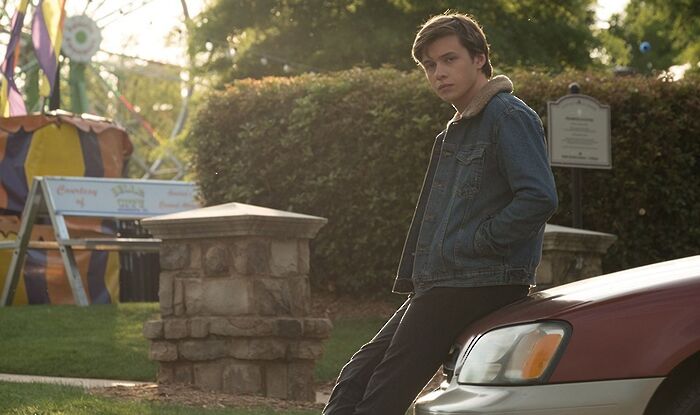Silent waltz: the tonal congruence of WALL-E and The Shape of Water
Struck by similarities in their messages, Charlie Stone writes an intriguing response to two Oscar-winning films

The Shape of Water, Guillermo del Toro’s fairy tale that has been such a hit among critics and audiences alike, shows a director known for exploring the very depths of fantasy and somehow endowing it with timeless relevance, at his very best.
Del Toro will be the first to tell you that he has not thought it all up himself. As Mark Kermode writes, the film “casts its inspirational web wide”, from the 1954 film The Creature From the Black Lagoon all the way back to Mary Shelley’s Frankenstein. However, despite the many, many works cited as potential influences, there has been little, if any, mention of the film whose similarities with this one are both extensive and unsettling.
“Excessive Western capitalism, nostalgia, othering and intolerance yet ultimate hope”
This film is WALL-E. At first, Del Toro’s story and the Pixar animation could not seem more different, not least in their average audience’s age: WALL-E certainly steers clear of the masturbation and torture we grow accustomed to in The Shape of Water. But the pessimistic yet redemptive picture of humanity both features create through their similar themes, aesthetics, and the pervasive silence of the main characters, ensures that the story of WALL-E and EVE has more than a little in common with that of Elisa Esposito and her Amphibian Man.
Firstly, there is the world each production represents. We are evidently witnessing two dystopias, where human activity and arrogance is the base for moral degradation and destruction. Whereas WALL-E moves us 800 years into the future to show the consequences, Del Toro brings us back to the Cold War to pinpoint one aspect of civilisation’s wrongdoings. Both of these worlds are fantasies, but there is enough to suggest that there once was – or could still be – a reality free from the sins that have led them to such ills. All of this primarily manifests itself as nostalgia, which is where the two films begin to rub shoulders very closely.

Watching the Amphibian Man gazing at a big screen himself where the classic musical Mardi Gras is playing to an empty theatre instantly recalls WALL-E staring with awe at the live-action clip of the musical Hello, Dolly! and learning how to hold hands. These moments are both a romantic nod to Hollywood’s past, itself a sure-fire way of getting the American film industry on side, and an efficient and classy means for creating a nostalgic atmosphere important to both stories.
Such a theme manifests itself in the two principal couples. WALL-E’s director, Andrew Stanton, has admitted to naming his hero’s girlfriend EVE after the biblical figure, because the male robot’s loneliness reminded him of Adam. The humans’ recolonisation of Earth at the story’s end is a return to the paradise they had destroyed, a happy inversion of the biblical story. The Shape of Water finishes on a similar Adam and Eve motif, as Elisa and the Amphibian Man leave to begin a new life with each other away from the civilisation that persecuted them. Add this to the fact that neither of the couples speak the same language and have to learn to communicate in a more subtle, intimate way, and to the constant themes of outsiders and loneliness, and the two love stories begin to reflect each other in many ways.
Of course, for every resemblance between the two films, there is a difference, perhaps no clearer than in the overtly sexual nature of Elisa’s relationship. Yet thematic disparities such as these are mostly down to the age group for which both features are primarily designed, and do not differentiate the like-minded messages beneath. WALL-E is now oft-considered a children’s film with a grown-up message, and The Shape of Water strikes the same tones of excessive Western capitalism, nostalgia, othering and intolerance yet ultimate hope, in an equally chilling though slightly more reptilian setting.
When WALL-E was released, the American Film Institute claimed that “not since Chaplin’s ‘Little Tramp’ has so much story – so much emotion – been conveyed without words”. Fast forward only ten years and Sally Hawkins’s Elisa has done the same, in a film with a startlingly similar world view
 News / Caius mourns its tree-mendous loss23 December 2025
News / Caius mourns its tree-mendous loss23 December 2025 Comment / Yes, I’m brown – but I have more important things to say22 December 2025
Comment / Yes, I’m brown – but I have more important things to say22 December 2025 News / Cambridge welcomes UK rejoining the Erasmus scheme20 December 2025
News / Cambridge welcomes UK rejoining the Erasmus scheme20 December 2025 News / CUP announces funding scheme for under-represented academics19 December 2025
News / CUP announces funding scheme for under-represented academics19 December 2025 Interviews / Politics, your own way: Tilly Middlehurst on speaking out21 December 2025
Interviews / Politics, your own way: Tilly Middlehurst on speaking out21 December 2025










